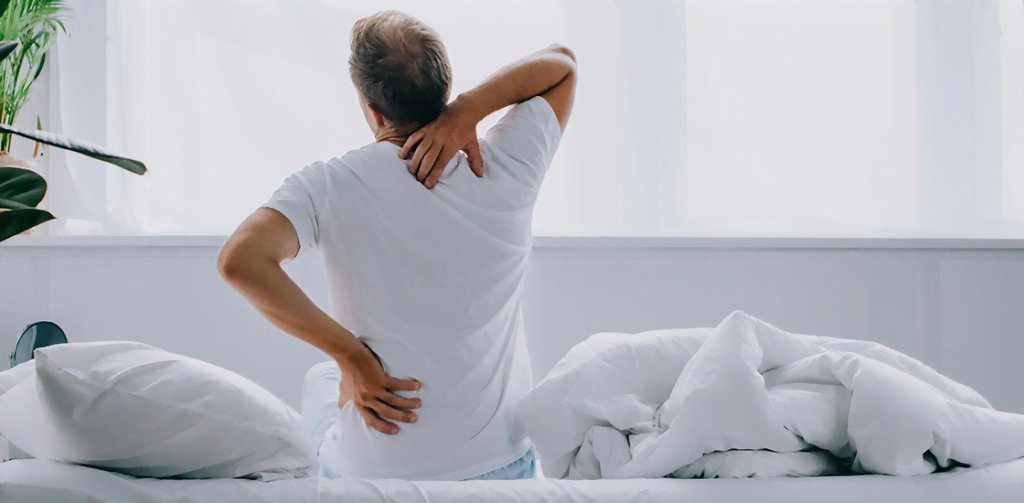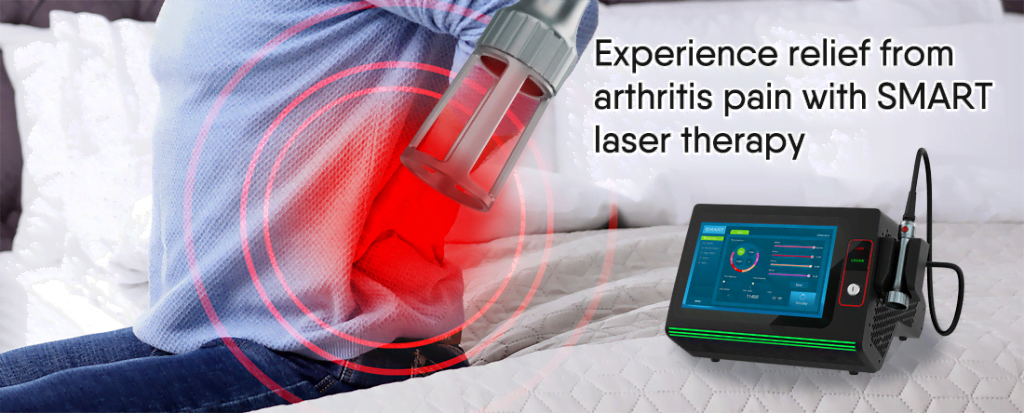Herniated disc
A herniated disc refers to a problem with one of the rubbery cushions (discs) that sit between the bones (vertebrae) that stack to make your spine. A herniated disc, which can occur in any part of the spine, most often occurs in the lower back. Depending on where the herniated disc is, it can result in pain, numbness, or weakness in an arm or leg.

Symptoms of herniated discs include:
Pain: The most common symptom of a herniated disc is pain that may be sharp, stabbing, or burning. The pain may be localized to the affected area or radiate down into the arms or legs.
Numbness or tingling: A herniated disc can compress nearby nerves, causing numbness, tingling, or weakness in the affected area.
Muscle weakness: As the herniated disc puts pressure on nerves, it can cause weakness in the muscles served by those nerves. This can make it difficult to lift or hold objects, walk, or perform other activities.
Loss of bladder or bowel control: In severe cases, a herniated disc can compress nerves that control bladder and bowel function, leading to incontinence.
Limited range of motion: A herniated disc can make it difficult to move the affected area, reducing flexibility and range of motion.
Treatment options for herniated discs include:
Rest: Taking a break from activities that exacerbate symptoms can help alleviate pain and reduce inflammation in the affected area.
Medications: Over-the-counter or prescription medications such as nonsteroidal anti-inflammatory drugs (NSAIDs) or muscle relaxers can help provide pain relief and reduce inflammation.
Epidural steroid injection: A healthcare professional may inject corticosteroids directly into the affected area to reduce inflammation and relieve pain.
Surgery: In severe cases, surgery may be necessary to remove the herniated portion of the disc and relieve pressure on the affected nerves.
Chiropractic care: A chiropractor may use spinal manipulation techniques and other therapies to adjust the alignment of the spine and relieve the pain.
Physical therapy: Exercises and stretches can help strengthen the muscles supporting the spine and improve flexibility.
Class 4 LASER THERAPY: It is a type of medical treatment that uses high-powered lasers to alleviate pain, reduce inflammation and promote tissue healing. It penetrates deeper into the body tissues than other classes of lasers and can be used to treat various conditions such as musculoskeletal injuries, arthritis, and neuropathic pain.
Class 4 LASER THERAPY for Herniated Discs:
Class 4 LASER THERAPY for herniated discs involves flooding the lumbar spine disc herniation with photons that energize the cells and increase blood circulation to the area that causes pain. The purpose is to trigger a cascade of healing responses in your lumbar spine to reduce inflammation and pain.
Herniated discs can be effectively treated with our class iv high power laser therapy machine. It uses high-level light or photons that penetrate your skin and go deep into the damaged cells in your lower spine. As a result, it triggers biochemical reactions in your cells to start the healing process. Don’t let herniated discs interfere with your daily life. Try Class 4 Laser Therapy today and experience the natural pain relief and healing benefits of our advanced laser technology.

[1] Choy, D. S. (2001). Response of extruded intervertebral herniated discs to percutaneous laser disc decompression. Journal of clinical laser medicine & surgery, 19(1), 15-20.
[2] Sobol, E., Zakharkina, O., Baskov, A., Shekhter, A., Borschenko, I., Guller, A., … & Sviridov, A. (2009). Laser engineering of spine discs. Laser Physics, 19, 825-835.
Medical lasers
Professional CLASS 4 high-power laser therapy machine
Home use
Portable handheld cold laser therapy device
Veterinary use
Laser therapy machine, shockwave physical therapy, widely used in animals